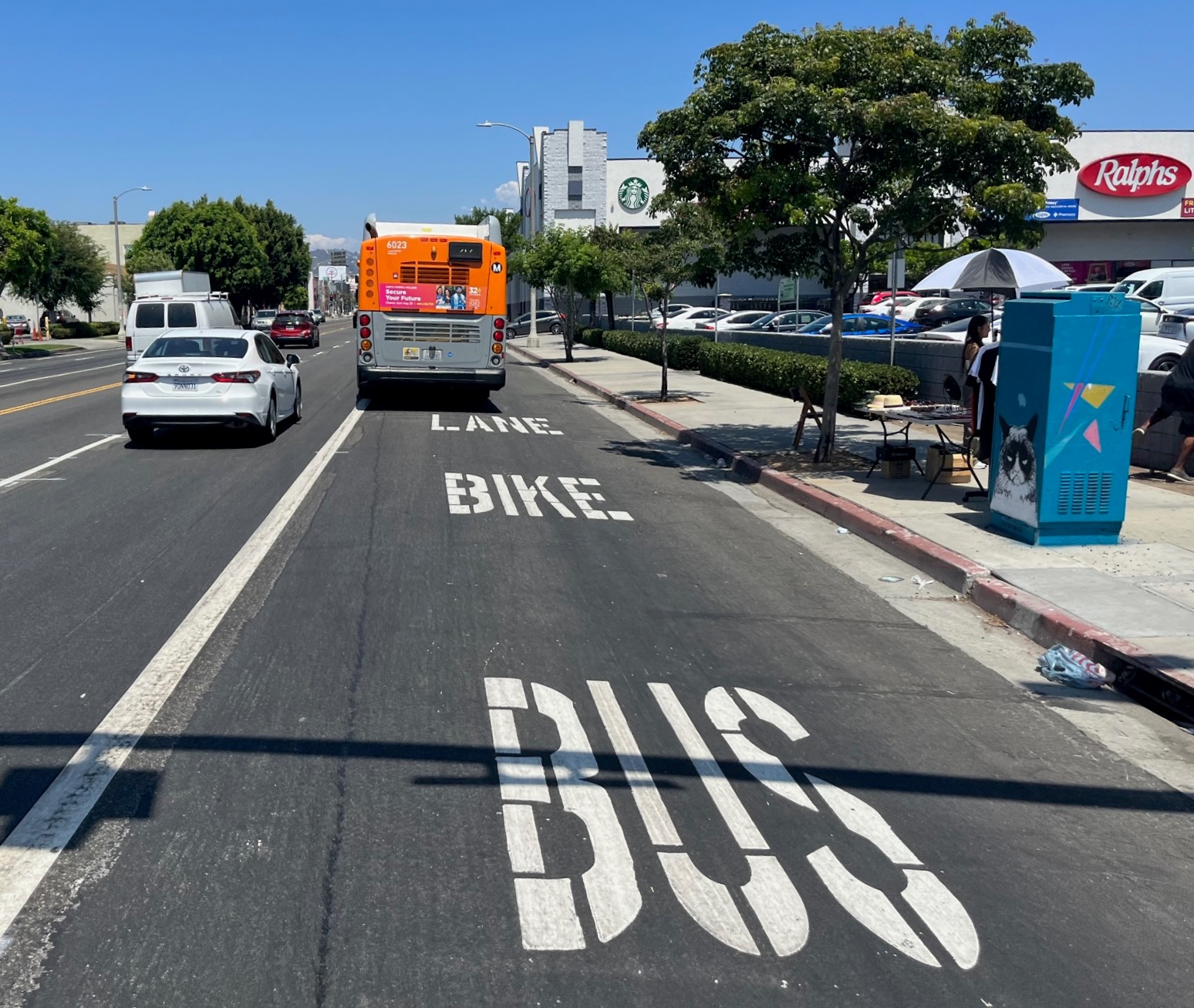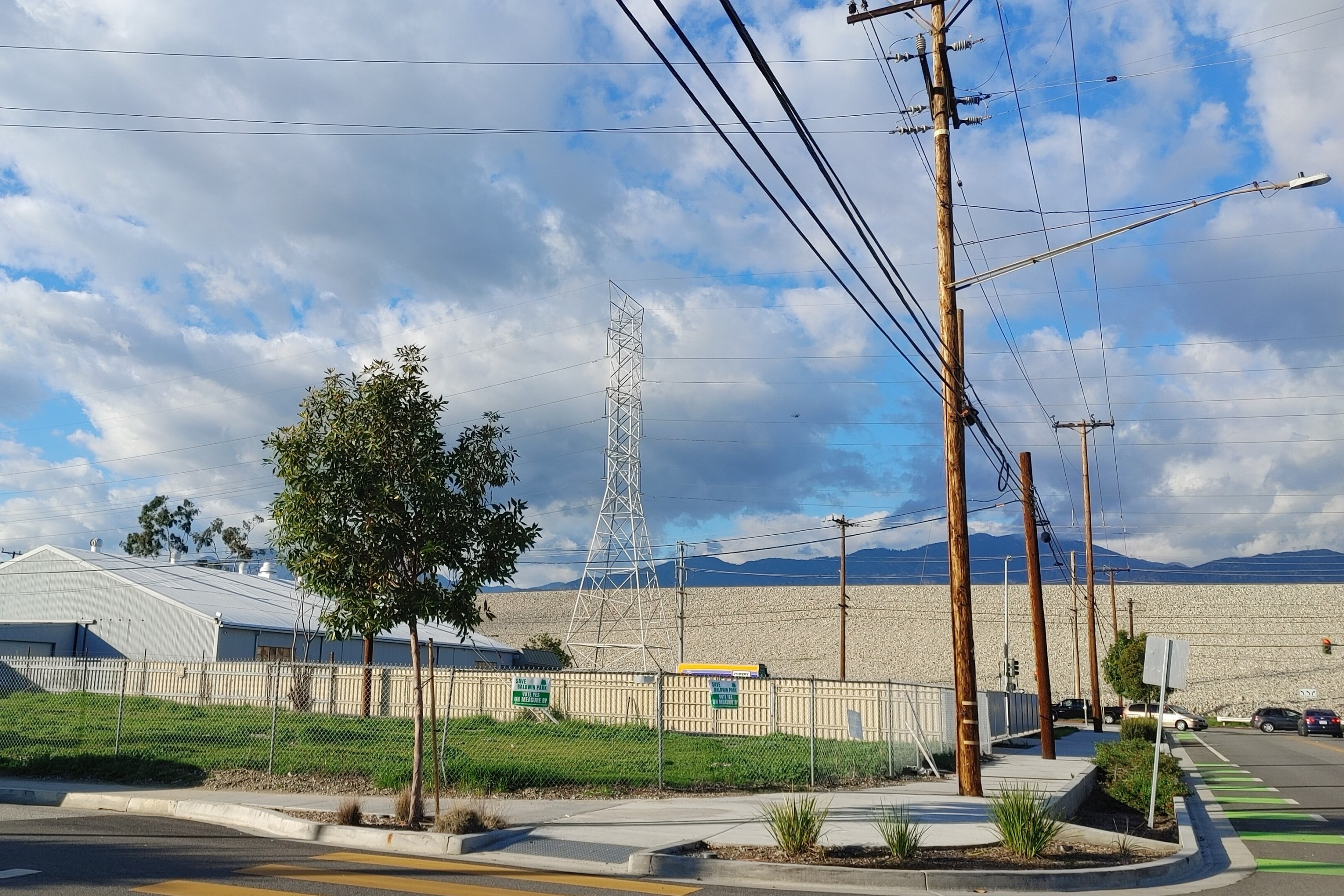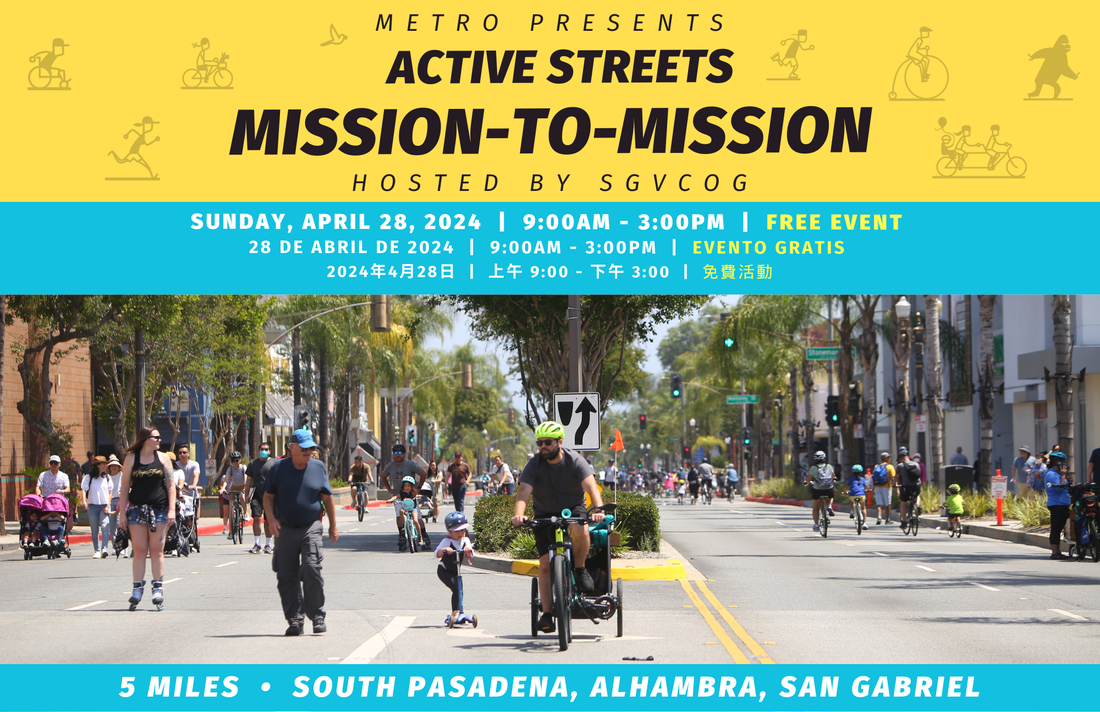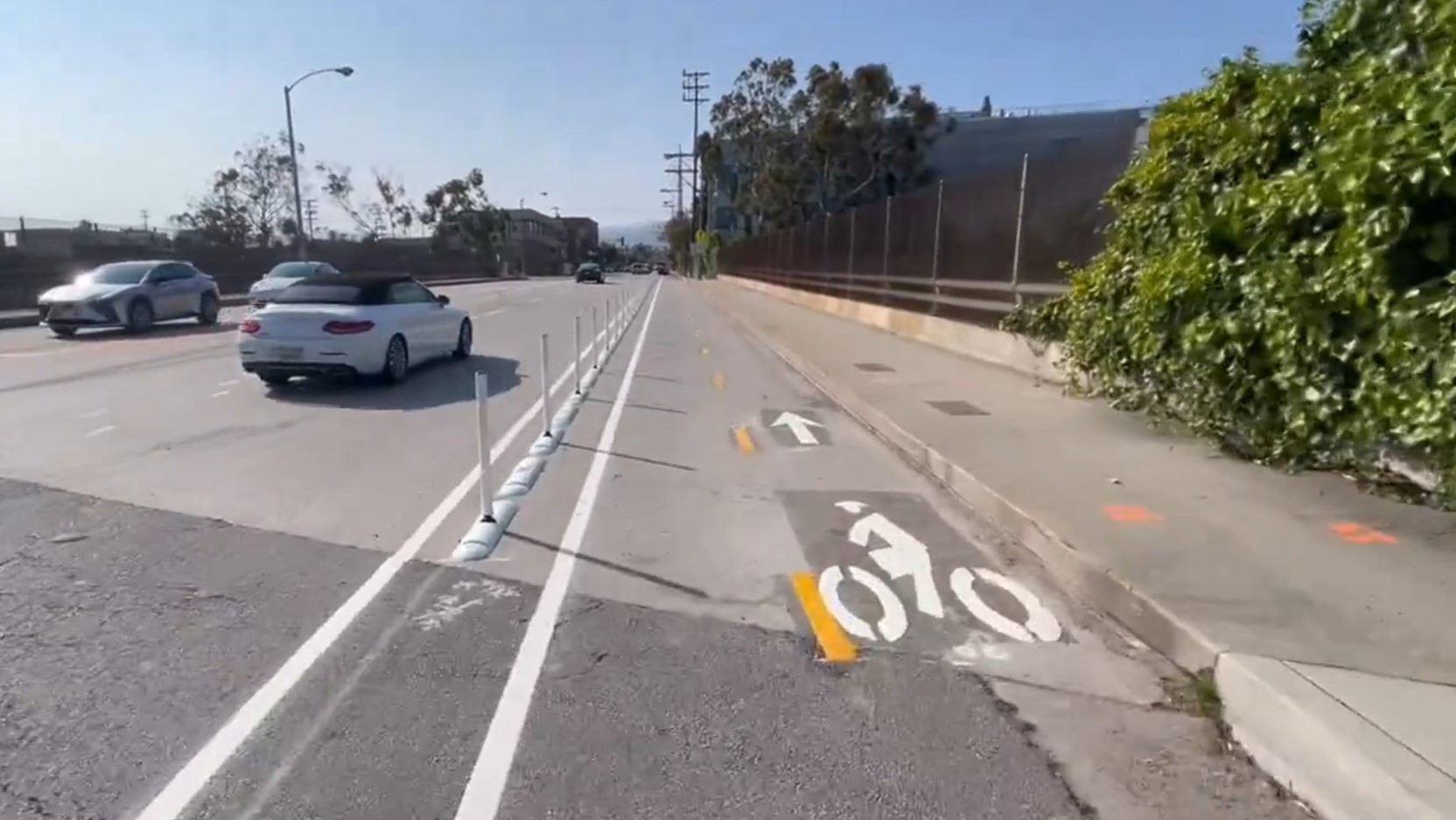California Long-Range Transportation Plan: GHG Goals Are Elusive
4:14 PM PDT on March 10, 2015
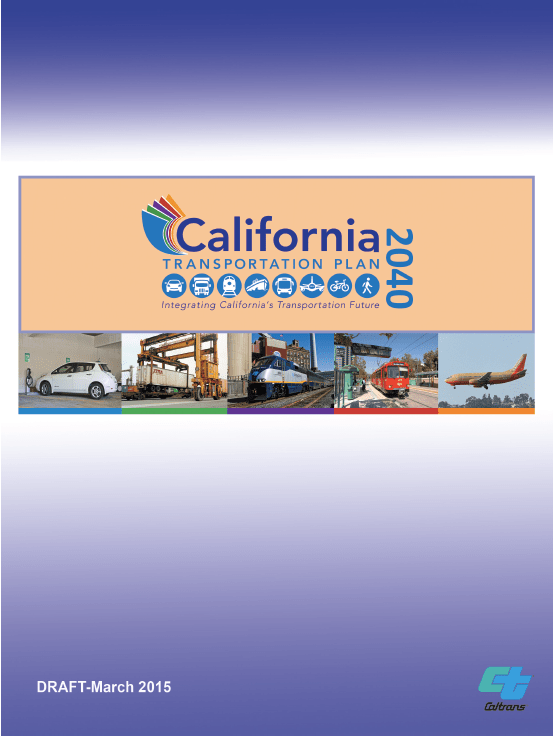
Caltrans has been in the process of developing its long range transportation plan for the last two years. Now it has released the draft California Transportation Plan 2040 [PDF]. Public input will be solicited at workshops throughout the state in March and April, starting today in Sacramento.
The long range plan, or CTP, is based on the California Interregional Blueprint, which was developed in response to a 2009 law, S.B. 391 (from Carol Liu). That law required Caltrans to identify transportation strategies and policies that would achieve the greenhouse gas reduction goals set by A.B. 32, the Global Warming Solutions Act.
The CTP is ambitious and wide-ranging, incorporating input from many state agencies and covering a lot of ground. It sets out a vision for a multimodal, sustainable, and economically viable transportation system, including support and promotion of active transportation to help meet state goals. It defines transportation goals for California and identifies policies and strategies for meeting those goals, and includes analyses of its recommended strategies and their capacity to achieve GHG reductions.
That analysis shows that the state's transportation sector will not achieve its GHG reduction goals without applying every one of the plan's most aggressive recommendations, plus changing most of the existing cars and trucks on the road to zero-emission vehicles. Among the CTP's recommended strategies are road pricing, increasing the number of carpools, improving transit service, keeping high-speed rail fares low, doubling the number of bicycle trips, increasing carpool lane occupancy requirements from two to three people per car, managing the whole system better, and promoting “eco-driving” (accelerate slowly, avoid sudden braking, don't idle).
But some "strategies" were just eliminated from the analysis altogether:
The range of transportation strategies [analyzed was] narrowed . . . . Road capacity enhancing strategies were rejected due to concerns these would ultimately increase VMT.
This raises the question of how the state will prevent new “road capacity enhancing” projects from happening. They still seem to be awfully popular with some people—witness the recent completion of the 405 widening in L.A., or the current drumbeat about the need for a third vehicle lane on the Richmond-San Rafael bridge in the Bay Area--or the plan to build an expensive tunnel to connect the 710 in Long Beach to. . . what, again?
As long as these big capacity enhancing projects are being proposed, and supported, and built, it seems like a better idea to go ahead and analyze their effects on GHGs--and have the conversation about stopping them.
Another question is whether the CTP has teeth. The fact that it relies on existing documents that themselves haven't been used effectively is a concern. For example, it refers to
Caltrans Smart Mobility 2010: A Call to Action for the New Decade, commonly referred to as the Smart Mobility Framework (SMF). SMF core principles include location efficiency, reliable mobility, health and safety, environmental stewardship, social equity, and a robust economy. The SMF integrates transportation and land-use by applying principles of location efficiency, complete streets, connected multimodal networks, housing near destinations for all income levels, and protection of parks and open space.
But Caltrans was critiqued in a report last year for “almost completely ignoring” the Smart Mobility Framework. If that one ended up on the shelf, what hope does the CTP have?The CTP's recognition of active transportation modes as important elements in efforts to improve the state transportation system are laudable, but still faint. Although the plan does address the growing popularity of bicycling and walking among “millennials,” for example, it doesn't take seriously the idea that seniors might also wish to use those modes as they grow older.
The plan does include the following, utterly randomly chosen quotes:
- The design and construction of pedestrian pathways, bicycle routes, and rail and transit corridors can lead to job and middle-income wage growth for communities, while infusing money into the economy and enhancing the system.
- There needs to be a focus on improving interregional transit service and “first mile–last mile” transit access strategies that provide greater opportunities for transit supportive development at transit stations located along state highways.
- Bicycling and walking are attractive and flexible transportation options for shorter trips, and often share many of the same automobile facilities. Transportation options work even better when combined with a comprehensive transit system. Proximity to integrated facilities provide people with easy, quick, and inexpensive access to . . . desirable destinations.
The CT has four main strategies for reducing future GHG emissions in transportation:
- Reduce vehicle miles traveled and increase a shift to more sustainable transportation modes
- Efficiently manage, operate and maintain the transportation system (including construction practices)
- Eliminate all emissive vehicles from California roads and replace them with zero- to near-zero-emissions vehicles (road, rail, transit, and air) throughout the state
- Improve technology for all modes
The current schedule [PDF] for public workshops, which all take place from 4 to 7 pm, includes:
- Sacramento: Today
- Redding: Thursday, March 12
- San Diego: next Tuesday, March 17
- Riverside: next Wednesday, March 18
- Los Angeles: next Thursday, March 19
- Fresno: Tuesday, March 24
- Oakland: Thursday, March 26
For more information visit the CTP website.
Email tips, alerts, press releases, ideas, etc. to melanie@streetsblog.org.
For social media coverage focused on statewide issues, follow Melanie @currymel on Twitter or like our Facebook page here.
Stay in touch
Sign up for our free newsletter
More from Streetsblog Los Angeles
Brightline West Breaks Ground on Vegas to SoCal High-Speed Rail
Brightline West will be a 218-mile 186-mile-per-hour rail line from Vegas to Rancho Cucamonga - about 40 miles east of downtown L.A. - expected to open in 2028
This Week In Livable Streets
Active Streets Mission-to-Mission, LAPD reports on its use of force in 2023, Pasadena Transit plans, Metro subway construction, and more
Eyes on the Street: Santa Monica Connection from E Line Bike Path to Downtown Is Almost Complete
“Always be closing gaps in your bikeway network.”
